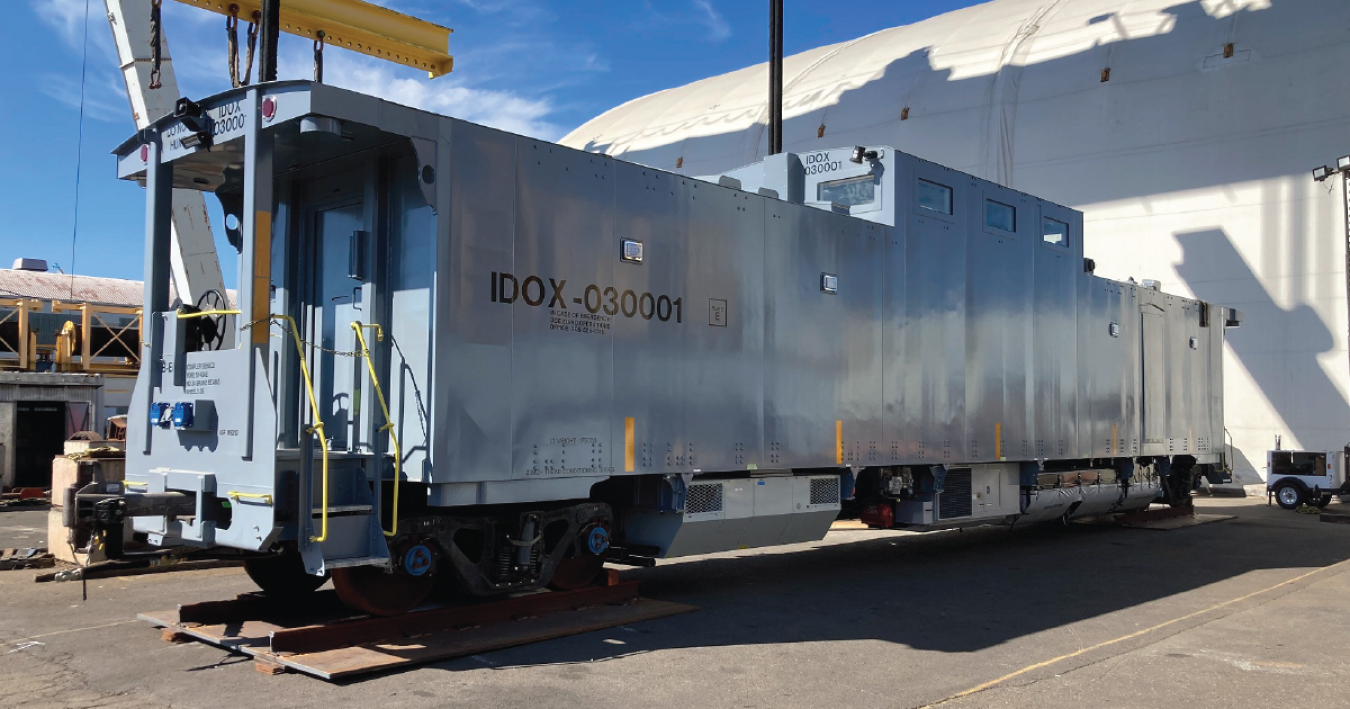A new high-tech railcar developed by the U.S. Navy and the U.S. Department of Energy departs for the final stage of testing. It's the last piece needed to form a complete railcar system required by DOE to transport SNF to disposal and storage facilities.
January 11, 2022

A new high-tech railcar developed by the U.S. Navy and the U.S. Department of Energy (DOE) is currently en route from Oregon to a site near Pueblo, Colorado for multiple-car testing. The Rail Escort Vehicle (REV), specifically designed to transport security personnel during the shipment of spent nuclear fuel (SNF) and high-level radioactive waste, is the last piece needed for a complete railcar system required by DOE to transport SNF to disposal and storage facilities across the country.
While the new REV provides a comfortable living and working environment for the security personnel onboard, it is no ordinary caboose. The REV is equipped with security features, including cameras and communications equipment, to provide enhanced surveillance of SNF shipments throughout the journey.
The project was initiated by the Navy’s Naval Nuclear Propulsion Program (NNPP) to replace its aging fleet of escort vehicles. DOE and NNPP leveraged shared resources and practices to develop the new REV design, which meets the Association of American Railroads (AAR) highest standard for railcars.
“The REV is the last piece of the puzzle in completing a railcar system to safely transport the nation’s spent nuclear fuel,” said Patrick Schwab, Atlas project manager for DOE’s Office of Nuclear Energy. “This project is a prime example of the great collaboration between DOE and the Navy and will further serve the nation’s naval nuclear propulsion program, as well as our civilian reactors which currently supply more than half of our nation’s clean energy.”
DOE contributed more than $10 million to the design and fabrication of the REV project. The railcar was built by Vigor Works LLC in Portland, Oregon where it successfully completed electrical and plumbing systems testing. The U.S. Department of Transportation’s Transportation Technology Center already conducted single-car performance testing on an earlier prototype of the vehicle.
A Complete Set
When the REV arrives at the test-site in late-February 2022, it will be connected to Atlas, a 12-axle railcar being developed by DOE, and buffer railcars to form a complete train. The entire train will then undergo two years of multiple-car testing, which will allow DOE to achieve initial operations capabilities as early as 2024.
Read more Nuclear Milestones HERE.

